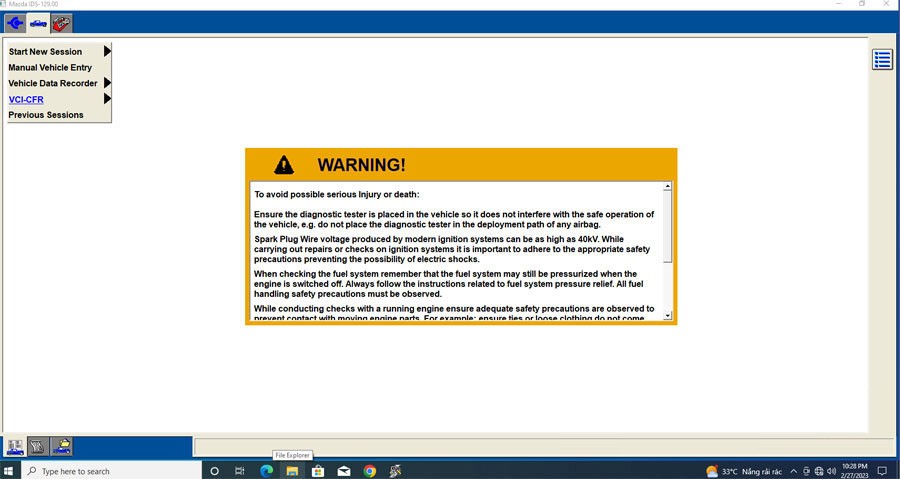Ford vehicles, known for their innovation and technology, require specialized diagnostic software for maintenance and repairs. Understanding these “Software Ids Ford” is crucial for technicians and enthusiasts alike. This guide delves into the intricacies of Ford’s Integrated Diagnostic Software (IDS) and its various versions, compatibility, and functionalities.
Ford IDS is the official diagnostic software used by dealerships and professional technicians to diagnose and troubleshoot issues in Ford vehicles. Different versions of IDS exist, each with specific functionalities and compatibility with certain vehicle models and hardware. Knowing which software ID is necessary for your specific needs is essential for effective vehicle diagnostics.
Understanding Ford IDS Versions and Compatibility
Ford IDS has evolved over the years, with newer versions offering enhanced features and supporting the latest vehicle models. While specific version numbers (like V130) are mentioned in some resources, understanding the broader compatibility landscape is more crucial.
Generally, Ford IDS software is designed to work with specific hardware interfaces, commonly referred to as Vehicle Communication Modules (VCMs). These VCMs act as a bridge between the software and the vehicle’s onboard computer systems.
Key Compatibility Considerations:
- Operating System: Ford IDS typically runs on Windows operating systems. Compatibility with specific Windows versions (like Windows 7, 8, and 10) might vary depending on the IDS version.
- Hardware Interface (VCM): The choice of VCM is critical. Different VCMs exist, including:
- VCM II: A commonly used interface for older Ford models.
- VXDIAG VCX Nano: A more modern interface often preferred for newer vehicles, offering both USB and WiFi connectivity.
- VCX SE: Another interface supporting newer communication protocols.
- VCM2 Clone: Aftermarket alternatives to the official VCM II.
- VNCI MF J2534: Interfaces adhering to the SAE J2534 standard for pass-thru diagnostics.
- Vehicle Model Year: The IDS version and corresponding VCM must be compatible with the vehicle’s model year. Older vehicles may require older IDS versions and VCM II, while newer models necessitate more recent software and hardware. Seventh-generation vehicles and beyond may require different software altogether, such as Mazda Diagnostic and Repair Software (MDARS).
Finding the Right Software IDs Ford
Identifying the correct Software IDs Ford requires understanding your specific vehicle and diagnostic needs. Resources like the official Ford Service Information website often provide detailed compatibility charts and software download links.
Tips for Finding Your Software ID:
- Consult Official Documentation: Refer to Ford’s official resources for the most accurate and up-to-date information on IDS versions, VCM compatibility, and vehicle coverage.
- Use Vehicle Identification Number (VIN): Your vehicle’s VIN can be used to determine the exact model year and specifications, which will help narrow down the compatible IDS version and VCM.
- Seek Expert Advice: If unsure, consult with experienced Ford technicians or diagnostic specialists who can guide you toward the correct Software IDs and hardware.
Conclusion: Mastering Ford Diagnostics with the Right Software
Navigating the world of Software IDs Ford can seem complex, but understanding the key principles of compatibility and utilizing official resources will simplify the process. By ensuring you have the correct software and hardware, you can unlock the full potential of Ford’s diagnostic capabilities, enabling accurate troubleshooting and efficient vehicle repairs. Always refer to official Ford documentation for the most accurate and reliable information regarding Software IDs and compatibility.
